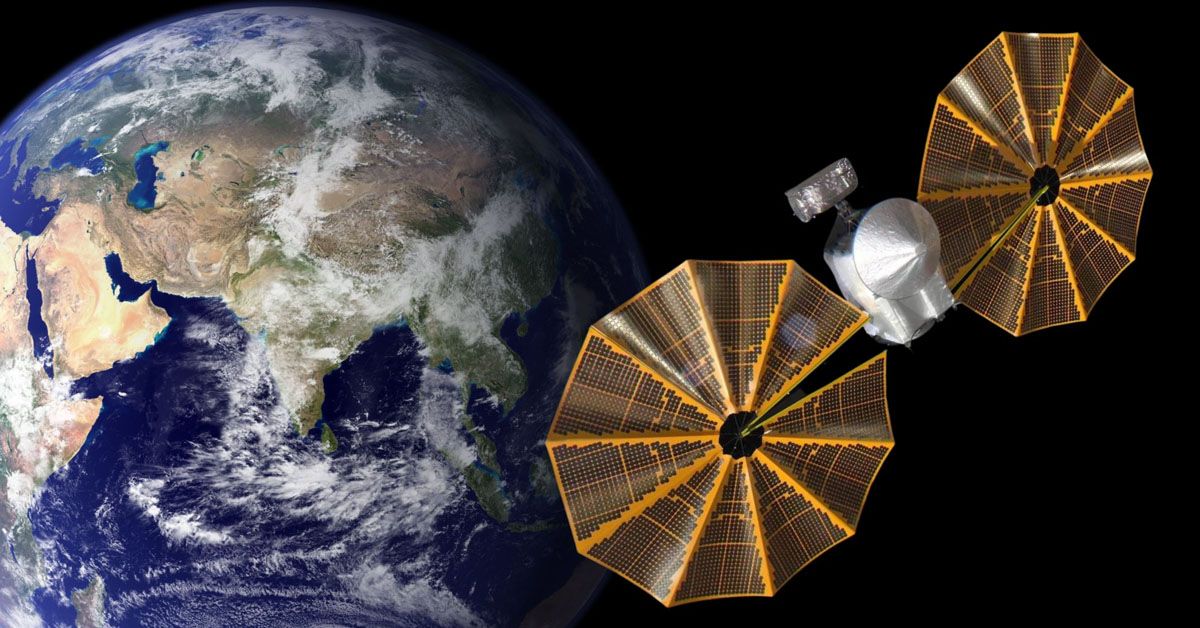A cosmic conquest is about to unfold! The United Arab Emirates (UAE), a nation known for its audacious ventures, has just announced a new mission that sends excitement down the scientific community's spine. This bold journey, the Emirates Mission to the Asteroid Belt (EMA), is set to catapult the UAE into the spotlight of interplanetary exploration.
With a spacecraft known as the MBR Explorer, the mission will traverse the silent void of our solar system for seven years, paying visits to seven key asteroids nestled within the main asteroid belt. But why are we setting our sights on these celestial stones? And how will this epic voyage change our understanding of the cosmos?
The Birth of an Adventure
The journey of the UAE in the world of space exploration has been nothing short of extraordinary. The nation's space program took a monumental leap in February 2021 when the Hope probe entered Mars' orbit, making the UAE the first Arab nation to achieve such a feat. This venture, known as the Emirates Mars Mission, has undoubtedly paved the way for the current asteroid expedition.
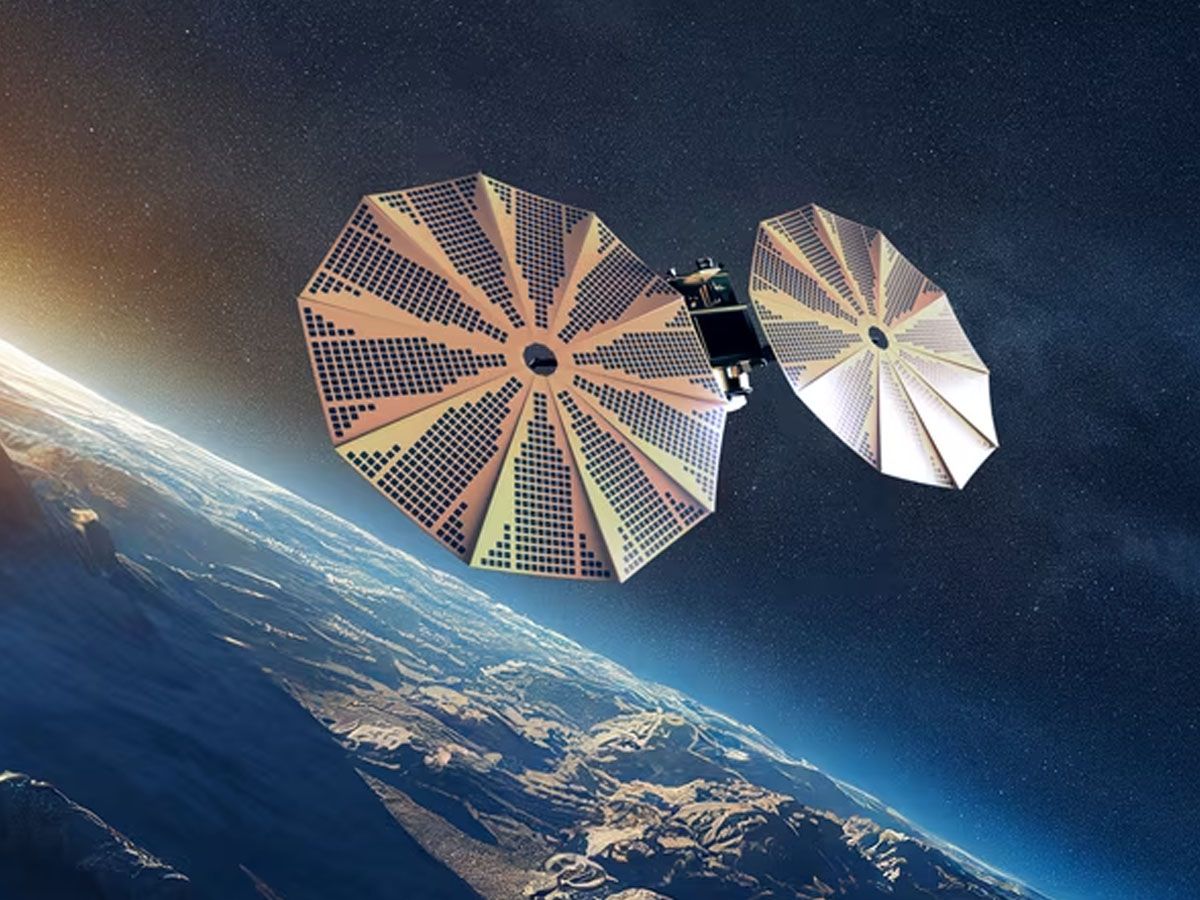
Since its establishment in 2014, the UAE Space Agency has been steadfast in its vision to utilize space science to advance national development. Just five years into its journey, the UAE sent its first astronaut to the International Space Station, making a bold statement about its capabilities. The UAE Space Agency has been instrumental in steering the country's space aspirations, and it continues to spearhead the ambitious Emirates Mission to the Asteroid Belt.
Assisting the Space Agency is the UAE Space Academy, an institution dedicated to fostering talent and promoting space science. Their commitment to developing expertise and knowledge in this domain is a cornerstone for the success of missions like EMA.
Crafting the Vessel: MBR Explorer
Named after Sheikh Mohammed bin Rashid Al Maktoum, the MBR Explorer is the backbone of the EMA mission. This spacecraft will undertake the audacious journey to the asteroid belt, equipped with four cutting-edge science instruments: a high-resolution camera, a thermal infrared camera, a mid-wavelength spectrometer, and an infrared spectrometer. These devices will enable the spacecraft to glean significant information about the targeted asteroids.
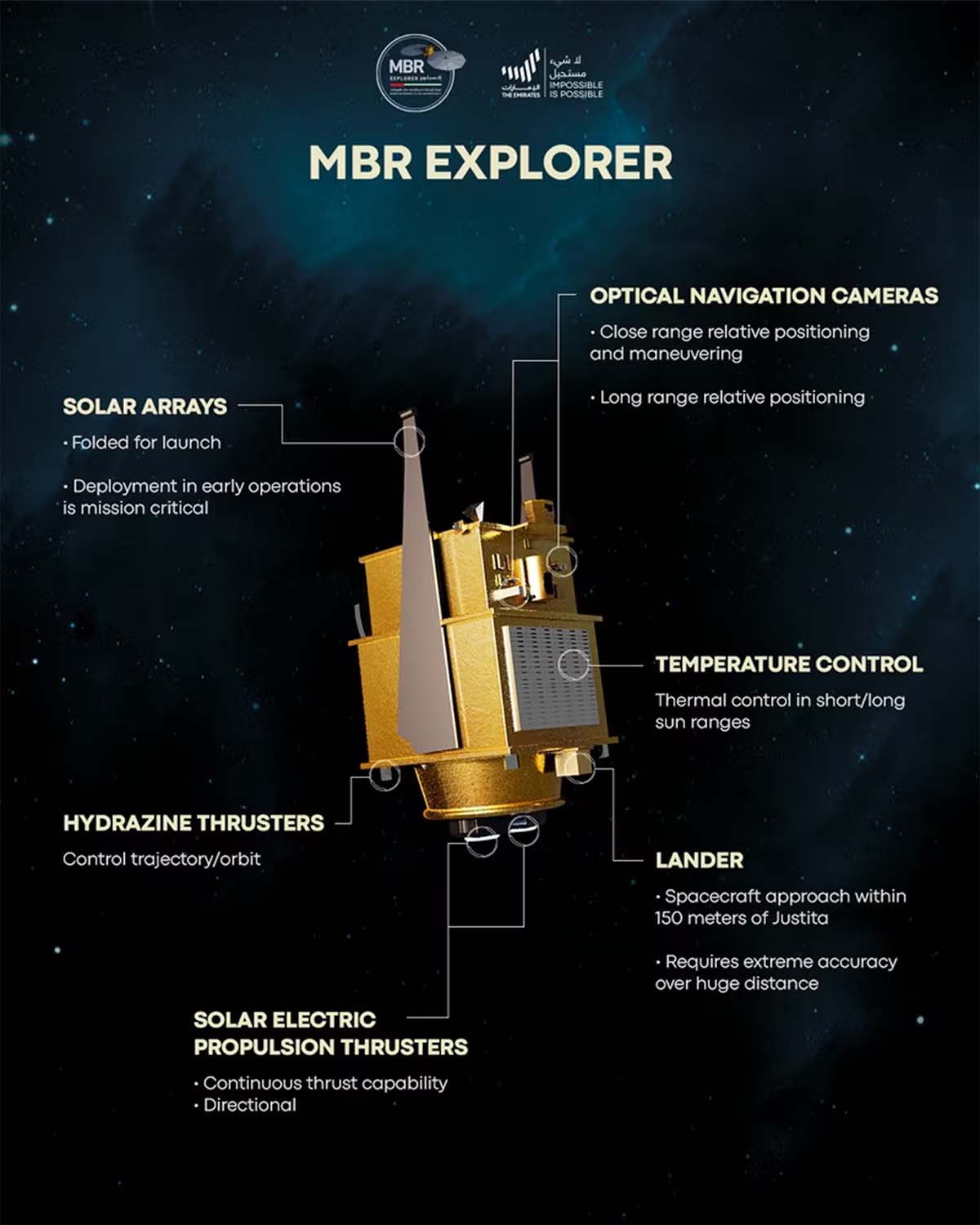
Setting forth in March 2028, the MBR Explorer is set to embark on a seven-year journey to the main asteroid belt. Harnessing Venus's gravitational pull, the spacecraft will slingshot toward the asteroid belt, covering an astounding distance of 5 billion kilometers. Traveling at jaw-dropping speeds of up to 33,000 kilometers per hour, the MBR Explorer will conduct a symphony of flybys, with the first asteroid encounter expected in February 2030.
Seven Stones in the Sky: The Targeted Asteroids
Asteroids are more than just rocks floating in space; they are pages in the cosmic history book, holding clues about the early solar system. Seven such asteroids have been chosen for this mission: (10254) Westerwald, (623) Chimaera, (13294) Rockox, (88055) 2000 VA28, (23871) 1998 RC76, (59980) 1999 SG6, and (269) Justitia.

Five of these are from known asteroid "families," suggesting they might have shared origins. Justitia, notably, is one of the reddest objects in the asteroid belt, and scientists suspect it may have a water-rich surface. This asteroid is of particular interest, as studying it could help us understand more about water on Earth and the genesis of life.
Smaller asteroids, such as Westerwald and 1999 SG6, are less than 10 kilometers across, while Justitia and Chimaera are much larger, around 50 kilometers in diameter. The variation in size and composition among these asteroids offers a unique opportunity to study and compare, leading to a richer understanding of our solar system's history.
Unraveling the Mysteries of the Universe
The Emirates Mission to the Asteroid Belt aims to further our understanding of the origins and evolution of our solar system, providing a deeper look into water-rich asteroids and their resource potential. Each target asteroid serves as a new puzzle piece in the grand cosmic jigsaw, opening up new possibilities for unraveling mysteries.
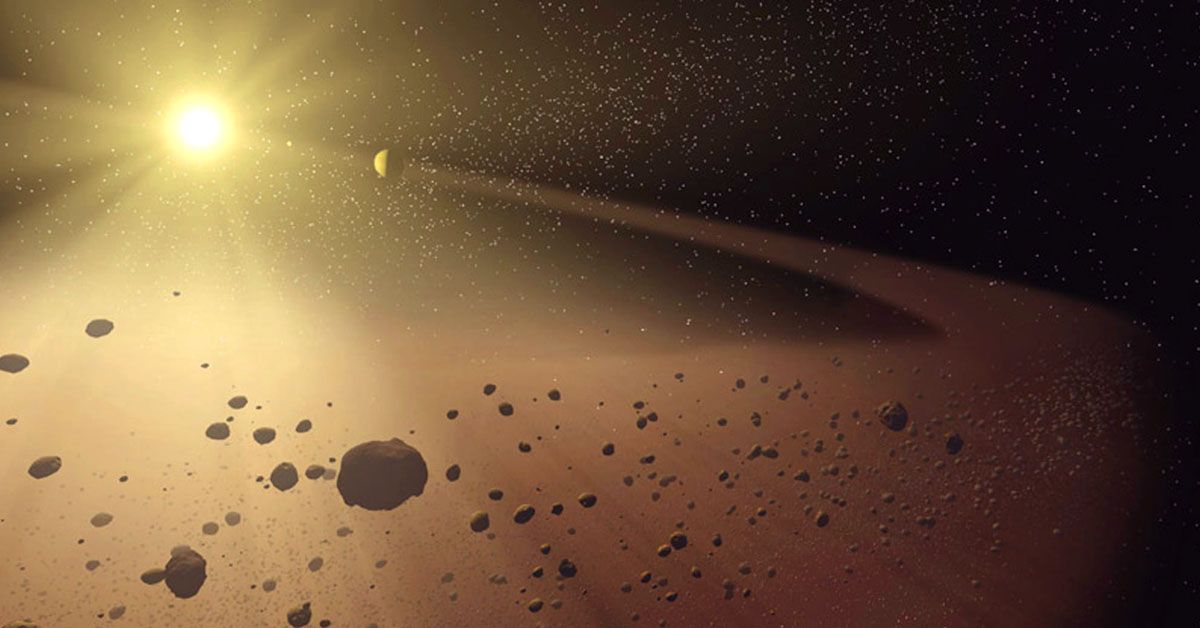
Prominent asteroid specialists Richard Binzel and Clark Chapman express their keen interest in the mission. According to them, EMA's ambitious endeavor of exploring different types of asteroids can provide unique insights into the solar system's early stages and the asteroids' evolution over time.
Retired astronaut Tom Jones adds another perspective, highlighting the mission's potential in revealing the nature of potential asteroid threats and unearthing valuable resources, contributing to a future space economy.
Behind the Scenes: Collaborations and Contributions
Undertakings as immense as the EMA mission necessitate global cooperation, encompassing esteemed institutions. The University of Arizona is supplying an infrared spectrometer, a critical tool for discerning the components of asteroids.
Additionally, the Italian Space Agency, Northern Arizona University, and Malin Space Science Systems are each playing crucial roles in crafting the scientific instruments.
In terms of mission development and implementation, there's a substantial partnership with the Laboratory for Atmospheric and Space Physics (LASP) at the University of Colorado Boulder and the UAE Space Agency.
Facing the Challenges
Every adventure comes with its challenges, and the EMA mission is no exception. Mohsen Al Awadhi, the EMA Program Director, has shed light on the mission's most considerable hurdles, which include managing long radio delays and conducting high-speed flybys.
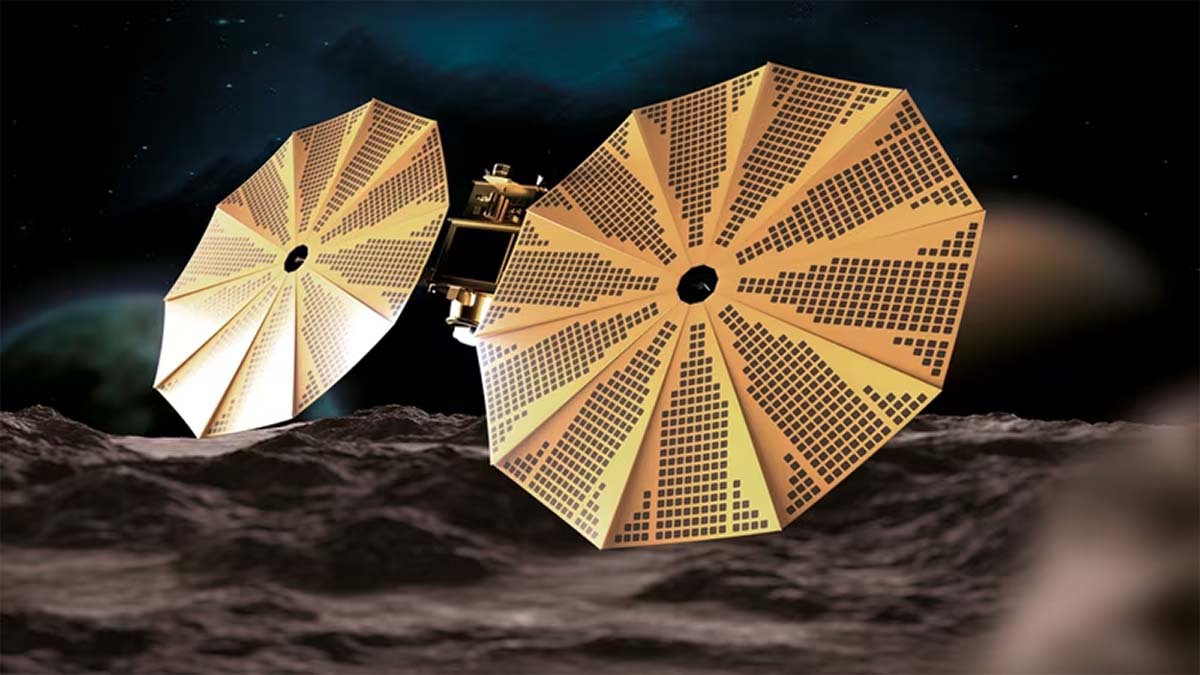
Covering a total distance of 5 billion kilometers at a speed of up to 33,000 kilometers per hour demands precision in navigation and instrument alignment, making this an intricate dance of timing and technology. But these challenges are viewed as opportunities to push the limits of what's achievable.
Potential Impacts: Beyond the Asteroid Belt
Looking ahead, the EMA mission could have far-reaching implications for future space exploration and colonization. By studying these asteroids, we might gain valuable insights into the origins of Earth's water and possibly the genesis of life. This understanding could, in turn, unlock the keys to finding life elsewhere in the universe.
Furthermore, the prospect of resource extraction from asteroids could open up new possibilities for sustaining long-duration space missions and supporting human settlements in space. This mission serves as the UAE's stepping-stone toward its long-term goal: establishing a colony on Mars by 2117.
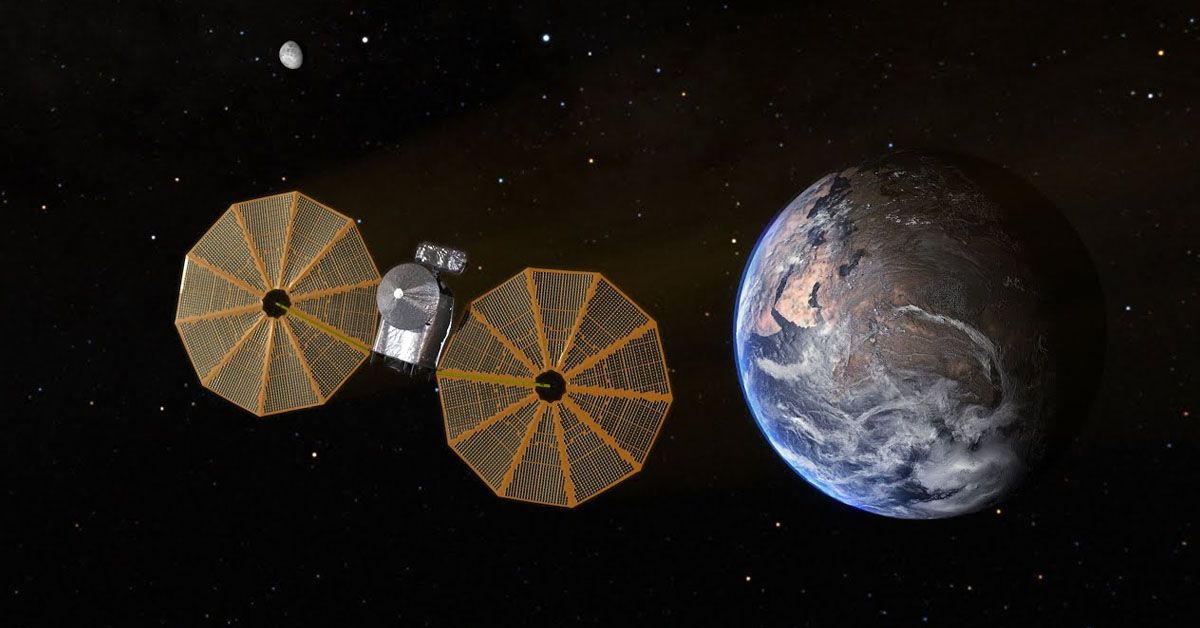
Undeniably, the Emirates Mission to the Asteroid Belt represents a leap into the unknown, promising to bring us closer than ever to understanding our place in the cosmos.
Sources: spaceref.com / nytimes.com / phys.org / space.com
